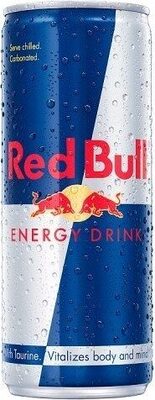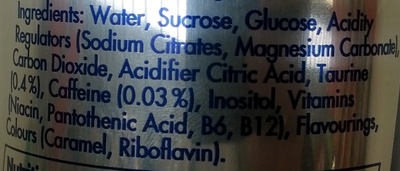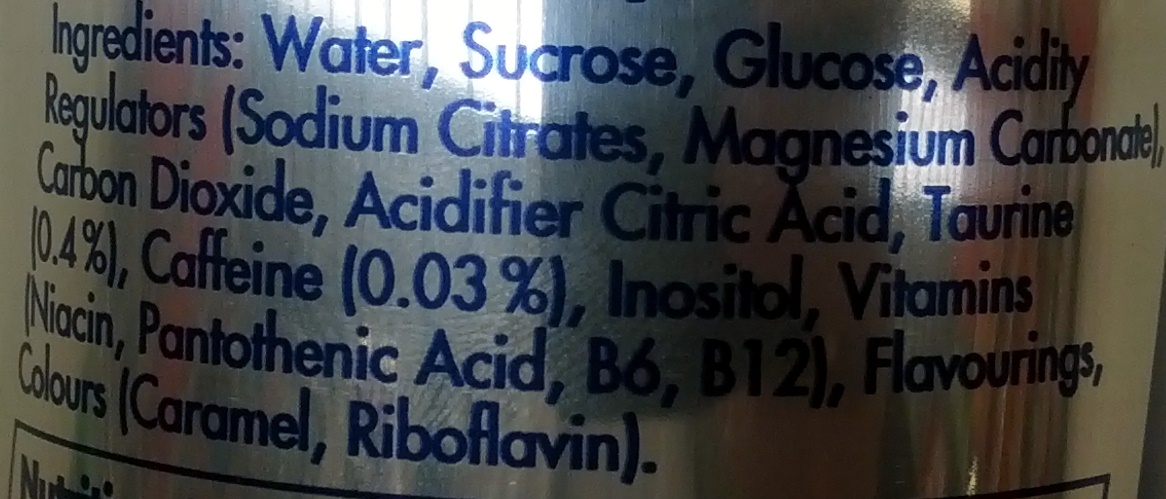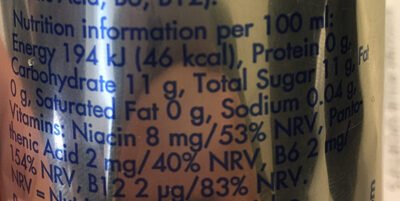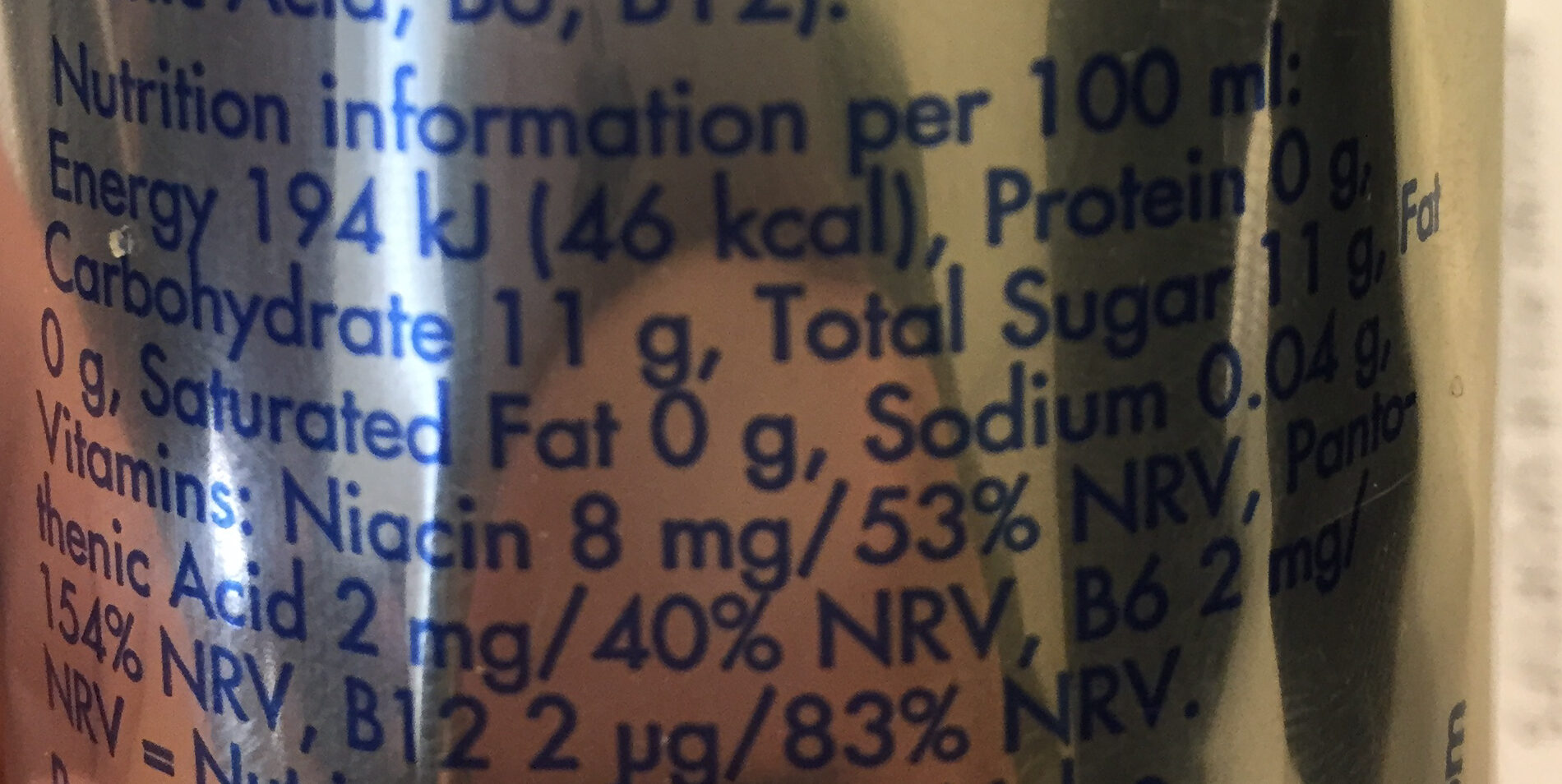Red bull energy drink 250ml can - 1
This product page is not complete. You can help to complete it by editing it and adding more data from the photos we have, or by taking more photos using the app for Android or iPhone/iPad. Thank you!
×
बारकोड: 90162602
Common name: Energy Drink
मात्रा: 1
पैकेजिंग: en:Can, en:Aluminium-can
ब्रांड: Red Bull
श्रेणियाँ: en:Beverages, en:Carbonated drinks, en:Sodas, en:Energy drinks, en:Sweetened beverages, en:Carbonated Sodas
जिन देशों में बिकता है: ऑस्ट्रेलिया, मिस्र, फ़्रान्स, भारत, आयरलैण्ड गणतंत्र, मोरक्को, ट्यूनिशिया, यूनाइटेड किंगडम, संयुक्त राज्य अमेरिका
Matching with your preferences
वातावरण
पैकेजिंग
Transportation
Report a problem
Data sources
Product added on द्वारा openfoodfacts-contributors
Last edit of product page on द्वारा foodless.
उत्पाद पृष्ठ द्वारा संपादित भी aleene, archanox, chevalstar, ecoscore-impact-estimator, foodorigins, foodvisor, gavingt, gmlaa, halal-app-chakib, inf, jw3, kiliweb, mitchell, packbot, scanbot, scrypt, smoothie-app, swipe-studio, tacinte, tacite, yuka.UW8wTEtmNGxyK01KeThFUjJ3UHYrdGhGK0x1eVpYMmNOTTA0SVE9PQ, yuka.sY2b0xO6T85zoF3NwEKvlhddT-jcpj7IHAXjnE632M-FMZm0Po1R5I-hHqo, yuka.sY2b0xO6T85zoF3NwEKvlhxtd_iEuBXOOiHWtHSrwoeSHKzQPPFW6KTmNqg, yuka.sY2b0xO6T85zoF3NwEKvlk5kdIXxgSPrZxvVn0ew1IqxKIb5MNEo3tbmC6s, yuka.sY2b0xO6T85zoF3NwEKvlklrUov7qA7uCATlmBaXwejQc7u4fv15_YvIFqs, yuka.sY2b0xO6T85zoF3NwEKvlkpcauvh-hvUaEbik26N4YizLJPxQe99x5joYqo, yuka.sY2b0xO6T85zoF3NwEKvllVLCOT3pT74LRHtmGyrn9K8JMG4MNoi2LTkI6g, yuka.sY2b0xO6T85zoF3NwEKvlm9aV9TFjmruKCXRi1DbzPjWMJXOP_595a-ga6o, yuka.sY2b0xO6T85zoF3NwEKvlnFGeYTmuxLVCiz4uHes1Ou0LJ3YeO4o2Kj2EKs, yuka.sY2b0xO6T85zoF3NwEKvlnV9XYTmvhedMiTvmxGtnsqrJKLBZtdb3rPRH6s.
